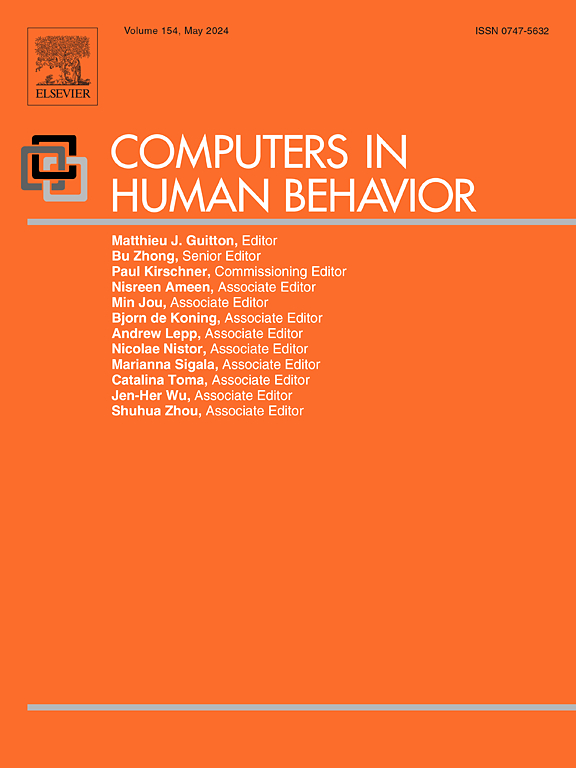社交虚拟现实中的会话动态:对言语行为和非言语行为的大规模纵向研究
IF 8.9
1区 心理学
Q1 PSYCHOLOGY, EXPERIMENTAL
引用次数: 0
摘要
本研究探讨社交虚拟现实(VR)中的言语互动。我们开发了虚拟现实交互动力学方案(vrid),其中包括10种言语行为(例如,质疑,意见,异议),通过整合现有的言语框架和我们数据中的新结构。我们分析了一个虚拟课堂中109名参与者在四周内的讲话,编码了9738个话语单位。vrid引入了新的结构,如对虚拟对象的上下文相关评论,随着时间的推移,随着用户对该技术的熟悉,这种结构也在增加。想法分享也随着时间的推移而增加,这表明合作得到了加强。我们通过言语行为序列和“回声”策略识别吸引和排斥状态。此外,我们还研究了非语言行为和言语行为之间的联系;在提问和语境相关的评论中,头部和手部的运动增加,但在争论中减少。我们的数据库包括文字记录、言语行为和非言语数据。未来的工作将训练大型语言模型来识别VR中的语音行为。本文章由计算机程序翻译,如有差异,请以英文原文为准。
Conversational dynamics in social virtual reality: A large-scale, longitudinal study of speech acts and nonverbal behavior
This study explores verbal interactions in social virtual reality (VR). We developed the Virtual Reality Interaction Dynamics Scheme (VRIDS), which includes 10 speech acts (e.g., questioning, opinions, disagreements) by integrating existing speech frameworks with new constructs from our data. Analyzing speech from 109 participants in a metaverse classroom over four weeks, we coded 9738 discourse units. VRIDS introduced new constructs like context-dependent commentary on virtual objects, which increased as users became more familiar with the technology over time. Idea sharing also increased over time, indicating enhanced collaboration. We identified attractor and repeller states through speech act sequences and an “echoing” strategy. Additionally, we examined the link between nonverbal behavior and speech acts; head and hand movements increased during questioning and context-dependent commentary but decreased during disagreements. Our database includes transcripts, speech acts, and nonverbal data. Future work will train large language models to recognize speech acts in VR.
求助全文
通过发布文献求助,成功后即可免费获取论文全文。
去求助
来源期刊

Computers in Human Behavior
Multiple-
CiteScore
19.10
自引率
4.00%
发文量
381
审稿时长
40 days
期刊介绍:
Computers in Human Behavior is a scholarly journal that explores the psychological aspects of computer use. It covers original theoretical works, research reports, literature reviews, and software and book reviews. The journal examines both the use of computers in psychology, psychiatry, and related fields, and the psychological impact of computer use on individuals, groups, and society. Articles discuss topics such as professional practice, training, research, human development, learning, cognition, personality, and social interactions. It focuses on human interactions with computers, considering the computer as a medium through which human behaviors are shaped and expressed. Professionals interested in the psychological aspects of computer use will find this journal valuable, even with limited knowledge of computers.
 求助内容:
求助内容: 应助结果提醒方式:
应助结果提醒方式:


